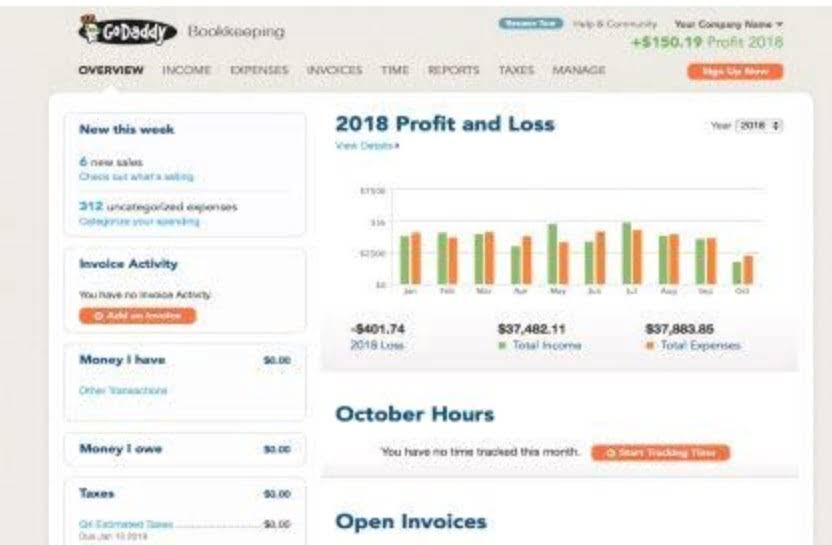
Many small business owners encounter challenges with this aspect of their financial management, but fear not – we’re here to provide you with a comprehensive guide on how to fix opening balance equity in QuickBooks Online. Owner’s equity is the proportion of company assets that the business owners can claim. It is calculated by taking the amount of money the owner of a business has invested and subtracting all liabilities and debt. However, this year, two journal entries have been inexplicably added to our Opening Balance Equity account. @lynda and Matthew @ParkwayInc here to give you a live discussion on what an equity account is and it’s meaning to the business owner as well as its relationship to the other balance sheet accounts. Learn how to enter an opening balance for a bank, credit card, and other types of accounts.

Managing Opening Balance Equity for Presentable Balance Sheets
The goal is to ensure that these amounts are subsequently allocated to the correct equity accounts in a timely manner. Under IFRS, the transparency of these allocations is paramount, as it affects the perceived accuracy of the company’s financial position and performance. Financial professionals often scrutinize the Opening Balance Equity account to ensure that the balances are being correctly resolved. This scrutiny is part of the process of establishing a solid foundation for the company’s financial records. As transactions are recorded over time, the balance in Opening Balance Equity should diminish, signifying that the company’s financial activities are being accurately reflected in its financial statements. Opening Balance Equity is a critical component in the accounting process, serving as a bridge between past financial activities and new accounting records.

Income Statement

This way, even if you begin a period with negative equity, it will be increased if the business is doing well. When you create a new account in QuickBooks Desktop, pick a day to start tracking all of your transactions. Accurate financial statements are essential for various stakeholders, including investors, creditors, and management, to make informed decisions.
- Suppose the founder starts a new business with an opening share capital of 100.
- Her areas of expertise include accounting system and enterprise resource planning implementations, as well as accounting business process improvement and workflow design.
- Ultimately, this practice promotes a more transparent and trustworthy financial environment, aligning with sound accounting principles and enhancing the integrity of the organization’s financial management.
- Once your decided accounting period has ended and the books are closed, your Net Profit/Loss will flow into Retained Earnings and help balance your Owner’s Equity.
- Opening balance equity is a term used in accounting to describe the initial balance of equity in a business at the start of a new accounting period.
Bank or credit card accounts
- In other words, it represents the difference between a company’s assets and liabilities at the beginning of a new accounting period.
- Understanding and appropriately managing Opening Balance Equity is vital for accounting procedures and transactions to uphold the reliability and trustworthiness of the financial data.
- He is currently the owner of Mad Hat Labs, a web design and media consultancy business.
- Zeroing out the Opening Balance Equity in QuickBooks Online involves the creation of a journal entry to address any discrepancies and ensure the accuracy of financial statements and equity accounts.
- Failing to check for unreconciled transactions can lead to discrepancies in addressing Opening Balance Equity in QuickBooks Online, potentially impacting the reconciliation process and the accuracy of financial records.
Over time, the balance in this account should be reduced to zero as the company’s financial activities are properly categorized and the opening balances are cleared against retained earnings or other specific equity accounts. This process is integral to achieving a clean and accurate set of financial statements. This crucial step not only https://www.instagram.com/bookstime_inc helps in maintaining financial accuracy but also allows small businesses to have a clear understanding of their financial position. Unreconciled transactions can significantly impact the accuracy of a company’s financial statements, leading to misrepresentation of financial performance.

I’ll be happy to provide some clarification on this Opening Balance Equity issue. Rather than the worth of your business, Equity is more aptly defined as an individual’s worth in the business. For example, if an individual invests $20,000 in the company but also brings in a $10,000 liability, their initial Capital is $10,000 (investment minus liability). I now have as you did in the video a balance of zero when I go to reconcile.

It simplifies the reconciliation procedures by eliminating potentially confusing amounts, enhancing the accuracy of financial records. The auditing of Opening Balance Equity accounts is a process that ensures the integrity and accuracy of a company’s financial records. Auditors examine these accounts to verify that the initial balances are correctly recorded and that subsequent allocations to other equity accounts are appropriate and in accordance with the relevant accounting framework. This examination involves a thorough review of the documentation supporting the historical balances and the rationale for any adjustments made. The International Financial Reporting Standards (IFRS), which are used in many countries outside of the United States, also recognize the concept of Opening Balance Equity. However, IFRS places a strong emphasis on the presentation of financial statements that are understandable, relevant, reliable, and comparable.
Bank Accounts
- I’ll be happy to provide some clarification on this Opening Balance Equity issue.
- I’m here to provide the steps to help locate it and suggest a process to resolve the discrepancies in the account.
- It is simply an automated function programmed into accounting software demonstrating an issue with the previous term’s balance sheet.
- Create additional journal entries to enter accounts receivable, accounts payable, sales tax payable, and anything else that wasn’t included in the initial journal entry.
- Zeroing out Opening Balance Equity in QuickBooks Online yields benefits such as accurate financial statements, streamlined reconciliation processes, and a clearer understanding of business performance.
- Utilizing efficient accounting software can streamline this process and enhance the overall reconciliation procedures.
- Small businesses can leverage the automated tools and accounting software of Akounto to minimize manual data entry errors to prevent them from carrying forward and impacting future financial records.
When you create a new account in QuickBooks, you pick a day to start tracking transactions. Then, you enter the balance of your real-life bank account for whatever day you choose. This strategic choice plays a pivotal role in maintaining the accuracy of financial records and ensuring that all reconciliations tie back to the general ledger. By integrating an offset opening balance equity account, organizations can effectively manage the impact of adjusting entries, thus upholding the integrity of their financial statements. Entering the correct Opening Balance Equity amount in the journal entry is crucial to ensure the accurate zeroing out of discrepancies and the resolution of adjustments in financial statements and reconciliation procedures.
As a result, if you create a new asset account with a balance, you must usually offset it by the same amount on the other side of the equation. If the company has outstanding vendor or customer balances, these should be entered as of the start date of the new company file. The purpose of Opening Balance Equity is to ensure that the company’s books are balanced when they are first set up. Jami Gong is a Chartered Professional Account and Financial System Consultant. She holds a Masters Degree in Professional Accounting from the University of New South Wales. Her areas of expertise include accounting system and enterprise resource planning implementations, as well as accounting business process improvement and workflow design.
Opening Balance Equity in QuickBooks
This is a built-in tool that can help see the history of changes made to transactions and who added them. For future reference, check out this article on how to Change an account opening balance on a bank account. Be careful entering the opening balances https://www.bookstime.com/ for accounts on your Balance Sheet. This includes Fixed Assets, Equity, Long-term Liability, Other Assets, Other Current Assets, and Other Current Liability accounts.

